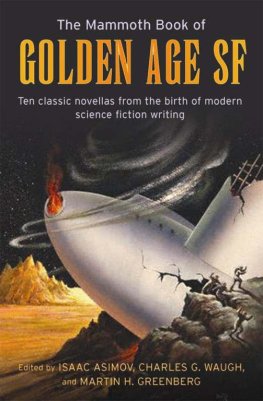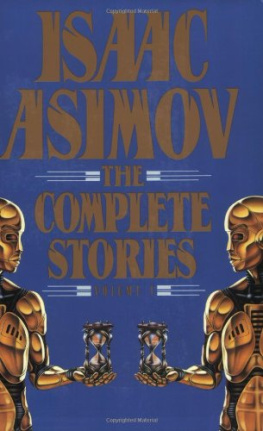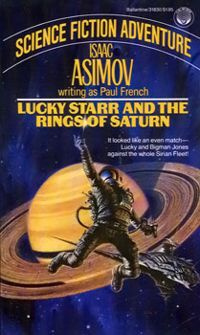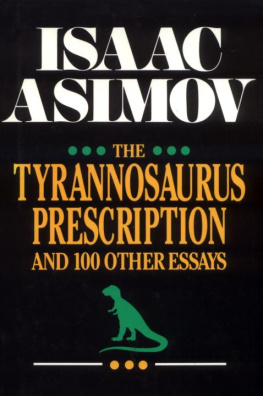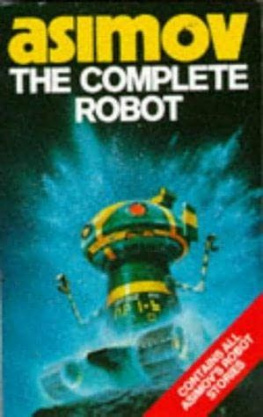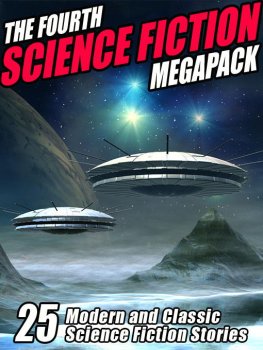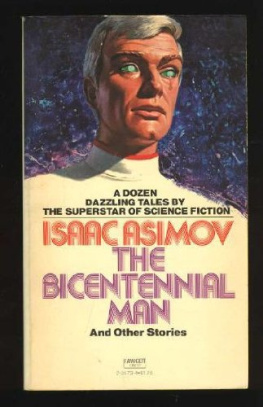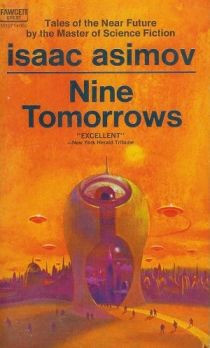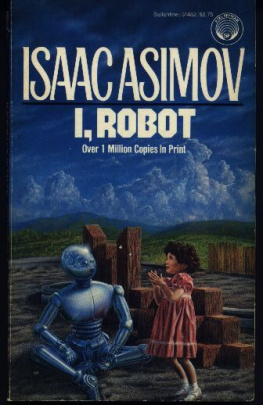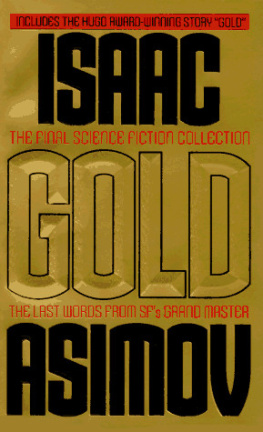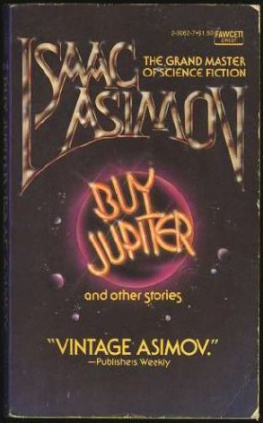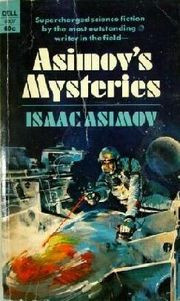THE MAMMOTH BOOK OF
GOLDEN AGE SCIENCE FICTION
Edited by Isaac Asimov, Charles G. Waugh and Martin H. Greenberg
Ross Rocklynne Copyright 1941 by Street & Smith Publications, Inc.; renewed 1969. Reprinted by permission of the authors agent, Forrest J. Ackerman, 2495 Glendower Ave., Hollywood, CA 90027.
A. E. van Vogt Copyright 1942 by Street & Smith Publications, Inc.; renewed 1970 by A. E. van Vogt. Reprinted by permission of Richard Curtis Associates, Inc.
Lester del Rey Copyright 1942 by Street & Smith Publications, Inc.; renewed 1970 by Lester del Rey. Reprinted by permission of the Scott Meredith Literary Agency, Inc., 845 Third Avenue, New York, NY 10022.
Fredric Brown Copyright 1943 by Standard Magazines, Inc.; renewed 1971 by Fredric Brown. Reprinted by permission of Roberta Pryor Inc.
Theodore Sturgeon Copyright 1944 by Street & Smith Publications, Inc.; renewed 1972 by Theodore Sturgeon. Reprinted by permission of Kirby McCauley, Ltd.
C. L. Moore Copyright 1944 by Street & Smith Publications, Inc.; renewed 1972 by Catherine Reggie. Reprinted by permission of Don Congdon Associates, Inc.
Isaac Asimov Copyright 1944 by Street & Smith Publications, Inc.; renewed 1972 by Isaac Asimov. Reprinted by permission of the author.
A. Bertram Chandler Copyright 1945 by Street & Smith Publications, Inc.; renewed 1973 by A. Bertram Chandler. Reprinted by permission of the agents for the authors Estate, the Scott Meredith Literary Agency, Inc., 845 Third Avenue, New York, NY 10022.
T. L. Sherred Copyright 1947, renewed 1975 by T. L. Sherred. Reprinted by permission of the authors Estate and the authors agent, Virginia Kidd.
Jack Williamson Copyright 1947 by Street & Smith Publications, Inc.; renewed 1975 by Jack Williamson. Reprinted by permission of the Spectrum Literary Agency.
INTRODUCTION
THE AGE OF CAMPBELL
Isaac Asimov
In the first book of the series, which dealt with classic science fiction (s.f.) novellas of the 1930s, I said that the 1930s was the decade in which science fiction found its voice. Toward the end of that decade, the voice began to resemble, more and more, that of John Wood Campbell, Jr., and in the 1940s, J.W.C. dominated the field to the point where to many he seemed all of science fiction.
It was a phenomenon that had never happened before and can never be repeated. Before the 1940s, science fiction was so small a field that, in a way, there was nothing to dominate. Hugo Gerns-back had been important in the 1920s, but he was alone. F. Orlin Tremaine had been important in the 1930s, but he did not drown out the other voices completely.
Campbell, however, towered. He had a charismatic personality that utterly dominated everyone he met. He overflowed with energy and he had his way with science fiction. He found it pulp and he turned into something that was his hearts desire. He then made it the hearts desire of the reader.
To put it another way, he found science fiction a side-issue written by eager fans with only the beginnings of ability, or by general pulp writers who substituted spaceships for horses, or disintegration rays for revolvers, and then wrote their usual stuff. Campbell put science fiction center stage and made it a field that could be written successfully only by science fiction writers who had learned their craft.
To put it still another way, he found science fiction a trifling thing that could only supply writers with occasional pin-money and he labored to make of it something at which science fiction writers could make a living. He could not, in the 1940s, drag the field upward to the point of making writers rich, but he laid the foundations for the coming of that time in later decades.
It is impossible for anyone ever to repeat the feat of John W. Campbell, Jr. For one thing you cannot lay the foundations for quality science fiction a second time. The foundation is there for all time and it was laid by Campbell. For another thing, the field has grown to such a pitch (thanks to Campbell) that it is too large ever to be dominated by one man. Even Campbell, larger than life though he was, if he were miraculously brought back into existence, could not dominate the field today.
So who was John Campbell? He was born in Newark, New Jersey on June 8, 1910. I have never found out much about his childhood, except that I received the impression that it was a very unhappy one. He attended M.I.T. between 1928 and 1931, but never finished his schooling there. The story I heard was that he couldnt pass German. He transferred to Duke University.
This double experience at college was reflected in his later work. At M.I.T. he picked up his interest in science. At Duke, where R.B. Rhine was conducting his dubious experiments on extra-sensory perception, he picked up his interest in the scientific fringe. In the 1940s, science dominated Campbells mind, and in the 1950s the scientific fringe did. He went from M.I.T. to Duke in science fiction as well as in his college training. In this volume, however, we are concerned with his earlier phase.
He sold his first science fiction story while he was still a teenager (not unusual among the true devotees) but he was too inexperienced to keep a carbon and T. OConor Sloane of Amazing Stories lost the manuscript (which was unusual). It was Campbells second sale, then, that marked his first actual appearance. This was When the Atoms Failed in the January 1930, Amazing. He was still only nineteen at the time.
In those days, the greatest name among the science fiction writers was E.E. Smith, Ph.D., who had climbed to fame with his The Skylark of Space, a three-part serial that appeared in the August, September, and October 1928 issues of Amazing. The Skylark of Space featured interstellar travel and dealt with megaforces and megadistances. It was an example of what came to be called super-science stories and Smith made it his specialty. Naturally, others followed the trend, and Campbell did so from the start. He quickly became second only to Smith in the super-science field.
There was a difference, though Smith could not change. He remained super-science to the end. Campbell could change and did. He wanted to write science fiction less in scale and more in introspection, less with ravening forces and more with puzzling mind.
He even changed his name for the purpose, writing a series of stories as Don A. Stuart. (His first wifes maiden name was Dona Stuart.) The first Stuart story was Twilight which appeared in the November 1934, Astounding Stories, a sad, haunting tale of the end of humanity. It proved an enormous hit, and instantly began the change of making science fiction smaller in scope and deeper in thought.
He wrote Stuart stories predominantly, thereafter, until he published his towering masterpiece Who Goes There? which appeared in the August 1938, Astounding, and which was reprinted in the first book of this series.
By October 1937, however, he had been appointed to an editorial position at Astounding and, within a few months, he was in full charge. His first significant action was to change the name of the magazine, a change which reflected his thinking. He wanted to get rid of words like amazing, astounding, and wonder, which stressed the shock-value and superficiality of science fiction. He wanted to call the magazine simply Science Fiction, thus merely defining its scope but allowing him to fiddle with the details at will.
Unfortunately, he was too late. Columbia Publications had already registered that name, and a magazine so-named (not at all successful) eventually appeared in the spring of 1939. Campbell was therefore forced to make only a partial change. With its March 1938 issue

